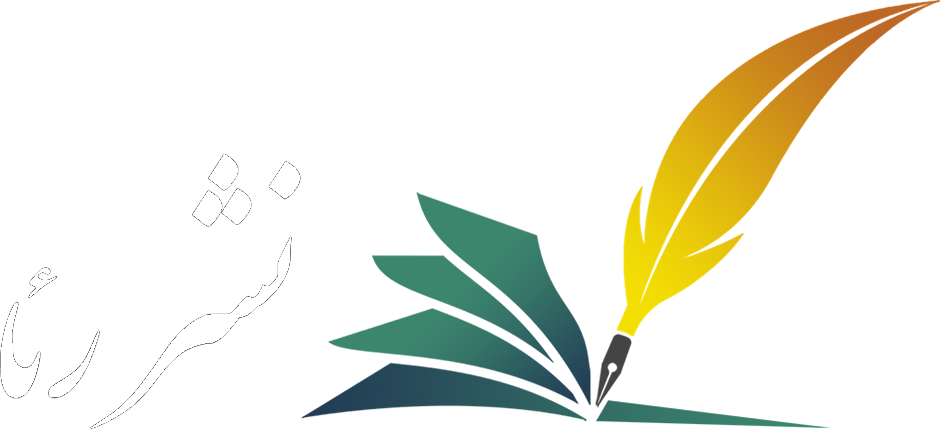رتبهبندی عملکرد اقامتگاههای بومگردی استان مازندران از دیدگاه گردشگران در رسانههای اجتماعی آنلاین
چکیده
هدف: هدف این پژوهش، شناسایی، ارزیابی و طبقهبندی ریسکهای مرتبط با پیادهسازی فناوری بلاکچین در سازمانها و بررسی تاثیر آن بر بهرهوری اطلاعات است. اهمیت این تحقیق در این است که با گسترش استفاده از بلاکچین در فرایندهای سازمانی، شناخت ریسکهای بالقوه میتواند به افزایش اعتماد، کارایی و موفقیت در اجرای پروژهها کمک کند.
روششناسی پژوهش: ابتدا با مرور ادبیات و مصاحبه با خبرگان، ۹ گروه اصلی ریسک شامل ریسکهای بازار، فنی، منابع انسانی، مالی، مدیریت پروژه، ساختار سازمانی، محیط سازمانی، منابع و استراتژیک شناسایی شد. سپس با استفاده از روش تحلیل عاملی تاییدی میزان تاثیر هر ریسک بررسی و در گام بعدی با بهرهگیری از پویایی سیستم، روابط میان ریسکها مدلسازی و در نرمافزار Vensim شبیهسازی گردید.
یافتهها: نتایج تحلیلها نشان داد که ریسک منابع انسانی بیشترین تاثیر را در شکست یا موفقیت پیادهسازی بلاکچین دارد. پس از آن، ریسکهای استراتژیک، مدیریت پروژه و ساختار سازمانی در اولویت دوم اهمیت قرار گرفتند. یافتهها همچنین بیانگر این است که مدیریت مؤثر منابع انسانی و برنامهریزی دقیق پروژه، نقش حیاتی در کاهش ریسک کلی پروژههای بلاکچین دارد.
اصالت/ارزشافزوده علمی: نوآوری این پژوهش در ترکیب رویکردهای کمی و پویایی سیستم برای تحلیل همزمان روابط پیچیده بین ریسکها است. نتایج این تحقیق میتواند به مدیران سازمانها در درک بهتر ریسکها، تصمیمگیری آگاهانهتر و بهبود بهرهوری اطلاعات هنگام استقرار فناوری بلاکچین کمک کند.
کلمات کلیدی:
بلاکچین، ریسک پیادهسازی، بهرهوری اطلاعات، پویایی سیستم، تحلیل عاملی تاییدیمراجع
- [1] Ramazanian, M. R., Azar, A., & Far, S. K. S. (2022). The impact of information integration on financial performance with a view to knowledge. Scientific journal of modern research approaches in management and accounting, 2(7), 8–21. (In Persian). https://www.majournal.ir/index.php/ma/article/view/115
- [2] Homsian Ittefat, S., Khalilabad Police Station, H., & Miraei, M. (2020). Evaluation of ecotourism management performance with emphasis on urban ecological textures (Case study: District 9 of Isfahan municipality). Journal of sustainable city, 4(2), 41-56, (In Persian). http://dor.net/dor/20.1001.1.24766631.1400.4.2.7.1
- [3] Hadizadeh, Z., & Sakhaei, B. (2014). Analysis of tourism development areas in rural settlements of Sari county. Quarterly journal of spatial economics and rural development, 3(8), 39–53. (In Persian). http://serd.khu.ac.ir/article-1-2012-fa.html
- [4] Larijani, N., Shafiei, M., & Najafi, S. E. (2023). Identifying the cultural strategies of ecotourism centers in Mazandaran province with an approach to content analysis. Quarterly journal of tourism management studies, 18(64), 191–216. (In Persian). https://doi.org/10.22054/tms.2023.73963.2847
- [5] Edalatpanah, S. A., & Yahya Poursheikh Zahedi, M. T. (2023). Changing attitudes in solving linear programming: An algorithm without using artificial variables. The 16th international conference of the iranian operations research association. Ramsar, Civilica. Iran. (In Persian). https://civilica.com/doc/1920693
- [6] Yahyapour-Shikhzahedi, M. T., Amirteimoori. A., Kordrostami, S. S. A. E. (2024). Inverse data envelopment analysis to estimate inputs with triangular fuzzy numbers. International journal of data envelopment analysis, 12(2), 1–12. (In Persian) https://www.magiran.com/p2798683
- [7] Shikhzahedi, M. T. Y., Amirteimoori, A., Kordrostami, S., & Edalatpanah, S. A. (2024). Inverse data envelopment analysis model to improve efficiency by increasing outputs. Decision making: Applications in management and engineering, 7(2), 1–14. https://doi.org/10.31181/dmame722024788
- [8] Yahyapour Sheikh Zahedi, M. T., Edalat Panah, S. A., & Amiri, A. (2021). A new model based on fuzzy arithmetic for solving fully fuzzy linear programming problems. The 14th international conference of the iranian operations research association. Mashhad, Civilica. Iran. (In Persian). https://civilica.com/doc/1365999
- [9] Mohammad Taghi, Y. & Zahedi, S. (2022). Presenting a model based on the properties of fuzzy numbers for solving fuzzy linear programming. Bi-quarterly journal of distributed computing and systems, 5(2), 16-22. (In Persian). https://www.jdcs.ir/article_190879_59f346c309c9fd60595ddebf8d2b3e18.pdf
- [10] Amiri, A., Saati, S., & Amir Teymouri, A. (2022). Bootstrap method and common weight set in data envelopment analysis for distinguishing efficient units. Modern research in mathematics (Basic sciences, Islamic Azad University), 8(35), 33-46. (In Persian). https://www.sid.ir/paper/1064644/fa
- [11] Nicula, V., & Spanu, S. (2014). Ways of promoting cultural ecotourism for local communities in Sibiu area. Procedia economics and finance, 16, 474–479. https://doi.org/10.1016/S2212-5671(14)00827-2
- [12] Arsić, S., Nikolić, D., & Živković, Ž. (2017). Hybrid SWOT-ANP-FANP model for prioritization strategies of sustainable development of ecotourism in National Park Djerdap, Serbia. Forest policy and economics, 80, 11–26. https://doi.org/10.1016/j.forpol.2017.02.003
- [13] Ghadiri, M., Minaei, M., & Daeban, A. (2020). The role of ecotourism lodges in the development of rural tourism in the rural areas of Khor and Biabanak counties. Quarterly journal of spatial economics and rural development, 9(32), 23–42. (In Persian). https://dor.isc.ac/dor/20.1001.1.23222131.1399.9.32.2.7
- [14] Moradi, H., Poursaeed, A., Vahedi, M., & Arayesh, M. B. (2020). Designing an ecotourism development model for tourism target villages in Kermanshah province. Tourism and development, 9(1), 25–46. https://doi.org/10.22034/jtd.2019.188908.1758%0A
- [15] Faraji Rad, A., & Ehsani, A. (2011). Investigating the impact of local accommodations (Khoshesar ecotourism) on improving the living standards of the local community (With emphasis on the villages of “Garmeh” and “Shib Deraz”). Geography of the land, 30(8), 63–78. (In Persian). https://elmnet.ir/doc/2415155-14216
- [16] Wardana, I., Sukaatmadja, I., Ekawati, N. W., Yasa, N. N. K., Astawa, I. P., & Setini, M. (2021). Policy models for improving ecotourism performance to build quality tourism experience and sustainable tourism. Management science letters, 11(2), 595–608. https://repository.pnb.ac.id/id/eprint/6083/1/Artikel%208.pdf.pdf
- [17] Azizi, K., Rastgar, S., Heydari, G., & Jafariyan, Z. (2019). Socio-economic impact of ecotourism on the empowerment of local communities Case: Baladeh region in Mazandaran province. Spatial economics and rural development, 8(1), 79–96. (In Persian). https://www.sid.ir/paper/521690/fa
- [18] Mondino, E., & Beery, T. (2019). Ecotourism as a learning tool for sustainable development, the case of monviso transboundary biosphere reserve, Italy. Journal of ecotourism, 18(2), 107–121. https://doi.org/10.1080/14724049.2018.1462371
- [19] Jaafar, M., Bakri, N. M., & Rasoolimanesh, S. M. (2015). Local community and tourism development: A study of rural mountainous destinations. Modern applied science, 9(8), 399-416. https://core.ac.uk/download/pdf/42953747.pdf
- [20] Scerri, M., Edwards, D., & Foley, C. (2016). The value of architecture to tourism. Proceedings of 26th annual cauthe conference (pp. 1–21). https://www.researchgate.net/profile/Moira-Scerri/publication/298952575
- [21] Fatimah, T. (2015). The impacts of rural tourism initiatives on cultural landscape sustainability in Borobudur area. Procedia environmental sciences, 28, 567–577. https://doi.org/10.1016/j.proenv.2015.07.067
- [22] Hashemi, H. (2021). Exploring the role of ecolodges on the culture domain. Tourism of culture, 1(3), 51–62. https://doi.org/10.22034/toc.2020.254949.1027
- [23] Latifian, M., Sharifzadeh, S., Abdollahzadeh, G., & Mollahosseini, A. (2020). Investigating service quality and reuse in local businesses: Location of ecotourism accommodations in Golestan Province. Entrepreneurship strategies in agriculture, 7(13), 24–34. (In Persian). https://dor.isc.ac/dor/20.1001.1.25383426.1399.7.13.4.0
- [24] Rostam Pisheh, M., Nasir Salami, M., & Tizghalm Zanouzi, S. (2019). Comparative evaluation and analysis of the physical structure of ecotourism accommodations (Case study: Talarkhaneh Bordbar and Deilmay Gasht ecotourism accommodations; Guilan Province). Physical development planning, 6(2), 111–132. (In Persian). https://dor.isc.ac/dor/20.1001.1.26455471.1398.6.2.8.0
- [25] Rabbani, R., Shafi’i, Z., & Anabastani, A. A. (2019). Investigating factors affecting tourists’ choice in relation to ecotourism resorts as a slow-moving tourism product (Case study: Ecotourism resorts in isfahan province). The fourth national conference on management, accounting and economics with an emphasis on regional and global marketing. Tehran, Iran. Civilica. (In Persian). https://civilica.com/doc/915325/
- [26] Anabestani, A., Giyahi, H., & Javanshiri, M. (2018). An analysis of the effects of establishing ecotourism residence on development of rural settlements (A case study of Radakan village, Chenaran County). Spatial planning, 8(2), 1–24. https://doi.org/10.22108/sppl.2018.108017.1132
- [27] Ghaith, A., Abdel-Wahab, M., Abdel-alim Abdel-ate, M., & Qoura, O. (2019). Service quality and guest satisfaction in Egyptian eco-lodge. International journal of heritage, tourism and hospitality, 13(2), 34–51. https://doi.org/10.21608/ijhth.2019.92750
- [28] Worku, Z., & Mohammed, T. (2019). Eco-lodges and tourist infrastructure development in and around Abijata Shalla Lakes National Park; From the perspective of evaluating their sustainability. Journal of tourism, hospitality and sports, 45(1220), 2–45. https://doi.org/10.7176/JTHS/45-02.
- [29] Ngoc Thuy, V. T., & Phuong Thao, H. D. (2019). Ecotourists’ satisfaction and dissatisfaction: asymmetric effects of service attributes. Journal of asian business and economic studies, 26(2), 189–205. https://doi.org/10.1108/JABES-07-2018-0051
- [30] Ahmed Saleh, Saleh El-Fattah Zohry, M., & Metwaly, A. H. (2017). Assessing the quality of hospitality services in eco-lodges. Mansoura university faculty of tourism and hotels, 2(2), 17–37. https://journals.ekb.eg/article_106900_ee2d4a226b6dace9fa0b076a33041aa6.pdf
- [31] Mohammad Taqi, G., Osna Ashari, A., & Ahmadpour, H. (2006). Investigating the efficiency of commercial banks in Iran: Case studies of mazandaran exports. Economic essays with an islamic approach, 3(5), 130–162. (In Persian). https://iee.rihu.ac.ir/article_312_a40740ba3519bf746fed07ef7235b5c9.pdf
- [32] Amiri, M., Salehi Sedqiani, J., Mirhedaytian, S. M., & Momeni, E. (2008). Development of a data envelopment analysis model for manufacturing performance evaluation with a case study. Improvement and transformation management studies, 19(58), 91–106. (In Persian). https://dor.isc.ac/dor/20.1001.1.22518037.1387.19.58.5.4
- [33] Charnes, A., Cooper, W. W., & Rhodes, E. (1978). Measuring the efficiency of decision making units. European journal of operational research, 2(6), 429–444. https://doi.org/10.1016/0377-2217(78)90138-8
- [34] Andersen, P., & Petersen, N. C. (1993). A procedure for ranking efficient units in data envelopment analysis. Management science, 39(10), 1261–1264. https://doi.org/10.1287/mnsc.39.10.1261





